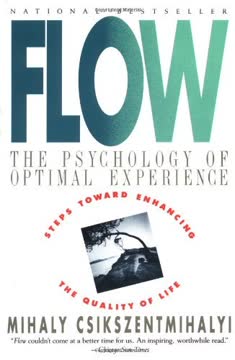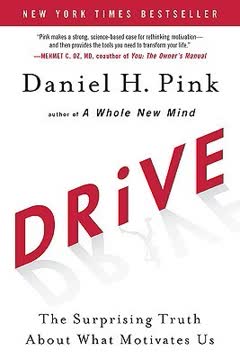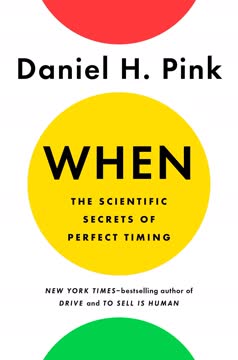가지 주요 요점
1. 내재적 동기가 외재적 보상을 초월한다
"일의 즐거움이 그 자체로 보상이 되었다."
내부 동기가 중요하다. 전통적인 동기 이론은 좋은 행동에 보상을 주고 나쁜 행동에 처벌을 가하면 최상의 결과를 얻을 수 있다고 가정한다. 그러나 다니엘 핑크의 연구에 따르면, 인지적 기술이 필요한 작업에서는 내재적 동기가 훨씬 더 효과적이다. 이 내부 동기는 외부의 보상이나 처벌이 아닌, 작업 자체에서 오는 고유한 만족감에서 비롯된다.
심리적 필요. 핑크는 동기 부여, 생산성, 행복을 높이는 세 가지 주요 심리적 필요를 제시한다:
- 유능감: 기술을 습득하고 성장하고자 하는 욕구
- 자율성: 자신의 삶과 일을 스스로 이끌어갈 자유
- 관계성: 타인과 연결되고 더 큰 무언가에 기여하고자 하는 필요
이러한 내재적 동기를 키우는 환경을 조성함으로써 조직은 사람들이 배우고, 창조하고, 성취하려는 자연스러운 경향을 활용할 수 있다.
2. 자율성이 참여와 창의성을 촉진한다
"창의적인 집단에게 궁극적인 자유는 새로운 아이디어를 실험할 수 있는 자유이다."
자기 주도성이 혁신을 낳는다. 자율성은 직원들에게 자신의 작업의 다양한 측면에 대한 통제를 부여하는 것이다:
- 작업: 그들이 하는 일
- 시간: 그들이 하는 시점
- 팀: 그들이 함께 하는 사람들
- 기법: 그들이 작업하는 방식
권한 부여가 결과를 낳는다. 직원들에게 더 많은 자율성을 부여하는 기업은 종종 참여도, 생산성, 혁신이 증가하는 것을 경험한다. 예를 들어:
- 구글의 "20% 시간" 정책은 엔지니어들이 자율적으로 프로젝트에 5분의 1의 시간을 할애할 수 있게 하여 Gmail과 AdSense의 탄생을 이끌었다.
- 아틀라시안의 "FedEx Days"는 직원들이 원하는 어떤 작업이든 24시간 동안 진행할 수 있게 하여 수많은 제품 개선을 가져왔다.
직원들을 신뢰하고 자유를 부여함으로써 조직은 전통적인 관리 방식이 종종 억누르는 창의성과 추진력을 이끌어낼 수 있다.
3. 숙련도는 개인 성장의 강력한 동기이다
"평범함은 비쌉니다. 반면, 탁월함은 해독제가 될 수 있습니다."
향상하려는 욕구. 숙련도는 중요한 무언가에서 더 나아지고자 하는 욕구이다. 이 동기는 사람들을 지속적으로 기술과 지식을 개발하도록 밀어주는 강력한 동기이다. 이는 사람들이 도전적인 취미에 참여하거나 어려운 직업을 추구하거나 자신의 기술을 완벽하게 다듬기 위해 수많은 시간을 보내는 이유를 설명한다.
몰입과 최적의 도전. 숙련도를 키우기 위해서는:
- "골디락스 작업" 제공: 너무 쉽지도, 너무 어렵지도 않은 작업
- 기술과 도전이 완벽하게 일치하는 "몰입" 경험을 위한 기회 창출
- 고정된 성과 목표보다 진행과 지속적인 개선 강조
숙련도에 대한 동기를 이해하고 활용하는 조직은 본질적으로 탁월함과 혁신을 추구하는 깊이 있는 참여 직원들을 창출할 수 있다.
4. 목적은 일을 더 큰 대의와 연결한다
"위대함과 근시안은 양립할 수 없다. 의미 있는 성취는 다른 사람의 시야를 넓히고 그들을 지평선으로 나아가게 하는 데 달려 있다."
이익을 넘어. 목적은 자신의 존재보다 더 큰 무언가와 일을 연결하는 것이다. 기본적인 필요가 충족된 시대에 사람들은 점점 더 자신의 일에서 의미를 찾고자 한다. 명확하고 영감을 주는 목적을 명시하고 구현하는 조직은 외재적 보상이 달성할 수 있는 것 이상으로 직원들을 동기 부여할 수 있다.
목적과 이익의 정렬. 기업은 다음과 같은 방법으로 목적을 촉진할 수 있다:
- 조직의 일이 세상에 긍정적인 영향을 미친다는 것을 명확히 전달
- 직원들이 자신의 일이 고객이나 사회에 미치는 직접적인 영향을 볼 수 있도록 허용
- 자원봉사와 기업의 사회적 책임 이니셔티브 장려
- 회사의 행동이 명시된 가치와 사명에 부합하도록 보장
직원들이 자신의 일이 더 큰 선에 기여하는 방식을 이해할 때, 그들은 더 많이 참여하고 헌신하며 최선을 다할 동기를 부여받게 된다.
5. 보상은 복잡하고 창의적인 작업에 해를 끼칠 수 있다
"작업이 '기본적인 인지 기술'을 요구하게 되면, 더 큰 보상이 오히려 성과를 저하시킨다."
"만약-그렇다면" 보상의 한계. 외재적 보상은 간단하고 기계적인 작업에 효과적일 수 있지만, 복잡하고 창의적인 작업에서는 종종 역효과를 낳는다. 핑크는 인지 기술이 필요한 작업에서 더 높은 인센티브가 오히려 성과를 저하시킨다는 연구 결과를 인용한다.
보상의 숨겨진 비용:
- 좁은 초점: 보상이 사람들을 유인된 행동에 집착하게 하여 다른 중요한 측면을 무시하게 할 수 있다.
- 단기적 사고: 즉각적인 보상을 추구하다 보면 장기 목표를 소홀히 할 수 있다.
- 감소된 내재적 동기: 외부 보상이 작업 자체에서 오는 고유한 만족감을 감소시킬 수 있다.
지식 작업과 창의적 노력에 있어, 조직은 외재적 인센티브에 의존하기보다는 내재적 동기를 촉진하는 환경을 조성하는 데 집중해야 한다.
6. 돈은 중요하지만 다른 방식으로
"사람들에게 돈 문제를 걱정하지 않도록 충분히 보상하라."
공정한 보상이 중요하다. 핑크는 돈이 여전히 중요하지만, 동기 부여에서의 역할은 전통적으로 생각했던 것보다 더 미묘하다고 주장한다. 돈을 주요 동기로 사용하기보다는, 조직은:
- 공정하고 적절한 기본 보상을 보장
- 보상이 불안이나 불만의 원인이 되지 않도록 제거
- 참여와 성과를 이끌기 위해 다른 요소에 집중
급여를 넘어. 공정한 보상이 확립된 후, 동기를 부여하는 데 있어 다른 요소들이 더 중요해진다:
- 인정과 감사
- 성장과 발전의 기회
- 의미 있는 일과 목적 의식
- 긍정적인 직장 관계
보상을 적절히 다루고 나서 내재적 동기에 집중함으로써, 조직은 더 참여적이고 생산적인 인력을 창출할 수 있다.
7. 피드백은 발전을 촉진하는 데 필수적이다
"직원들이 가장 동기부여를 느끼는 날은 그들이 '의미 있는 일에서 진전을 이루고 있다'고 느낄 때이다."
진전의 힘. 연구에 따르면, 지식 근로자를 동기 부여하는 데 가장 중요한 요소는 진전을 느끼는 것이다. 정기적인 피드백은 사람들이 자신의 발전을 인식하고 동기를 유지하는 데 필수적이다.
효과적인 피드백 전략:
- 빈번하게: 연례 평가뿐만 아니라 자주 피드백 제공
- 구체적으로: 성과와 개선이 필요한 영역에 대한 구체적인 정보 제공
- 시기적절하게: 관련 작업에 최대한 가까운 시점에 피드백 제공
- 실행 가능하게: 변경하거나 개선할 수 있는 행동과 결과에 집중
- 균형 있게: 성과를 인정하면서도 성장할 영역을 다루기
강력한 피드백 시스템을 구현함으로써, 조직은 직원들이 자신의 진전을 보고 동기를 유지하며 지속적으로 성과를 개선할 수 있도록 도울 수 있다.
8. 우뇌 사고는 점점 더 가치가 있다
"요즘 대부분의 직업은 혁신적이고 복잡한 사고를 하며, 고정관념을 깨는 능력을 요구한다."
창의적 작업의 부상. 일상적인 작업이 점점 자동화됨에 따라, 현대 경제에서 가장 가치 있는 기술은 창의성, 공감, 그리고 큰 그림을 보는 능력으로, 이는 전통적으로 우뇌 기능과 관련이 있다.
주요 우뇌 능력:
- 디자인: 미적으로 매력적이고 기능적인 제품/경험 창출
- 이야기: 아이디어를 전달하기 위한 매력적인 서사 구성
- 심포니: 큰 그림을 보고 이질적인 요소들을 연결
- 공감: 타인의 감정을 이해하고 공감
- 놀이: 유머와 놀이를 사용하여 혁신하고 문제를 해결
- 의미: 일과 삶에서 목적과 중요성을 찾기
이러한 기술을 배양하고 이들이 번창할 수 있는 환경을 조성하는 조직은 변화하는 경제에서 혁신하고 성공할 수 있는 더 나은 위치에 놓이게 된다.
9. 관리 방식은 준수에서 진화해야 한다
"관리는 1850년대에 발명되었다. 이는 사람들을 생산적인 능력으로 조직하기 위해 만들어진 기술이다."
명령과 통제를 넘어. 준수와 통제에 초점을 맞춘 전통적인 관리 접근 방식은 오늘날의 지식 근로자를 동기 부여하는 데 적합하지 않다. 핑크는 관리가 다음과 같이 진화해야 한다고 주장한다:
- 미세 관리보다는 자율성을 촉진
- 프로세스를 지시하기보다는 숙련도를 촉진
- 이익을 넘어 목적과 연결
새로운 관리 패러다임:
- 서번트 리더십: 직원들을 지원하고 권한을 부여하는 데 초점
- 결과 중심 근무 환경(ROWE): 근무 시간을 기준으로 성과를 평가
- 자율 관리 팀: 그룹이 자율적으로 작업을 조직하고 실행할 수 있도록 허용
- 애자일 방법론: 유연성, 협업, 지속적인 개선 강조
내재적 동기와 일치하는 보다 현대적인 관리 접근 방식을 채택함으로써, 조직은 더 참여적이고 생산적이며 혁신적인 인력을 창출할 수 있다.
마지막 업데이트 날짜:
FAQ
What's "Drive: The Surprising Truth About What Motivates Us" by Daniel H. Pink about?
- Core Premise: The book explores what truly motivates people, challenging the traditional belief that rewards and punishments are the primary drivers of human behavior.
- Research-Based Insights: Daniel Pink draws on over 50 years of behavioral science research to present a new understanding of motivation.
- Focus on Intrinsic Motivation: Pink emphasizes the importance of intrinsic motivators like autonomy, mastery, and purpose over extrinsic rewards.
- Application in Modern Workplaces: The book provides insights into how businesses can adapt their motivational strategies to better engage employees in the 21st century.
Why should I read "Drive: The Surprising Truth About What Motivates Us"?
- Revolutionary Ideas: The book challenges conventional wisdom about motivation, offering fresh perspectives that can transform personal and professional life.
- Practical Applications: Pink provides actionable advice for managers and leaders to foster a more motivated and engaged workforce.
- Broad Appeal: Whether you're a business leader, educator, or individual seeking personal growth, the book offers valuable insights.
- Engaging Writing: Daniel Pink is praised for his engaging writing style, making complex ideas accessible and thought-provoking.
What are the key takeaways of "Drive: The Surprising Truth About What Motivates Us"?
- Autonomy, Mastery, Purpose: These are the three key intrinsic motivators that drive human behavior and performance.
- Limitations of Extrinsic Rewards: Traditional "if-then" rewards are effective for simple tasks but can hinder performance in complex, creative tasks.
- Fair Compensation: While money matters, it should be sufficient to take the issue off the table, allowing employees to focus on their work.
- Engagement Over Compliance: True engagement comes from giving employees more control and purpose in their work, not just managing them for compliance.
How does Daniel H. Pink define "Autonomy" in "Drive"?
- Control Over Work: Autonomy involves giving employees control over their tasks, time, team, and technique.
- Encourages Engagement: When employees have autonomy, they are more likely to be engaged and motivated.
- Beyond Traditional Management: Pink argues that traditional management techniques are outdated and do not foster autonomy.
- Practical Implementation: Businesses can implement autonomy by allowing flexible work hours, self-directed teams, and personal project choices.
What is "Mastery" according to "Drive" by Daniel H. Pink?
- Desire to Improve: Mastery is the inherent human drive to get better at something that matters.
- Continuous Learning: It involves a mindset of continuous improvement and learning.
- Feedback Importance: Frequent, informal feedback is crucial for fostering mastery, as it helps individuals recognize their progress.
- Challenges and Growth: Mastery requires challenges that are neither too easy nor too difficult, promoting growth and satisfaction.
How does "Drive" explain the concept of "Purpose"?
- Meaningful Work: Purpose is about doing work that has significance beyond oneself.
- Aligning Goals: Employees are more motivated when their personal goals align with the organization's mission.
- Impact on Performance: A strong sense of purpose can significantly enhance productivity and job satisfaction.
- Case Studies: Pink provides examples, such as call center employees who performed better when they understood the impact of their work.
What are "if-then motivators" in "Drive" by Daniel H. Pink?
- Definition: "If-then motivators" are traditional incentives where a reward is given if a specific task is completed.
- Effective for Simple Tasks: These motivators work well for tasks requiring mechanical skills.
- Limitations: They are less effective for tasks requiring creativity and cognitive skills, often leading to poorer performance.
- Need for New Strategies: Pink suggests that modern workplaces need to move beyond these motivators to engage employees effectively.
How does "Drive" challenge traditional motivational theories?
- Critique of Rewards and Punishments: Pink argues that the traditional carrot-and-stick approach is outdated and ineffective for complex tasks.
- Focus on Intrinsic Motivation: The book emphasizes intrinsic motivators as more powerful and sustainable.
- Research-Based Evidence: Pink supports his claims with extensive research and case studies.
- Call for Change: He advocates for a shift in how organizations motivate their employees, focusing on autonomy, mastery, and purpose.
What are some of the best quotes from "Drive" and what do they mean?
- "Mediocrity is expensive while autonomy can be the antidote." This quote highlights the cost of not fostering autonomy and the potential benefits of empowering employees.
- "The joy of the task was its own reward." This emphasizes the power of intrinsic motivation, where the satisfaction of doing the task itself is rewarding.
- "Meaningful achievement is dependent on lifting someone else's sights and pushing them towards the horizon." It underscores the importance of purpose and helping others achieve their potential.
How does "Drive" suggest businesses should adapt their motivational strategies?
- Embrace Autonomy: Allow employees more control over their work to increase engagement and satisfaction.
- Foster Mastery: Provide opportunities for continuous learning and improvement, with regular feedback.
- Cultivate Purpose: Align organizational goals with employees' personal values and show the impact of their work.
- Move Beyond Money: Ensure fair compensation but focus on intrinsic motivators for long-term performance.
What is the significance of the study involving call center employees in "Drive"?
- Purpose-Driven Performance: The study showed that employees who understood the purpose of their work performed significantly better.
- Impact of Purpose: Group 3, which was given a purpose, received more than double the donations compared to other groups.
- Practical Implications: This highlights the importance of communicating the significance of tasks to employees.
- Broader Lesson: Purpose can be a powerful motivator, leading to increased productivity and job satisfaction.
How does "Drive" by Daniel H. Pink relate to modern workplace challenges?
- Adapting to Change: The book addresses the shift from mechanical to cognitive tasks in the modern workplace.
- Need for New Motivators: It highlights the inadequacy of traditional motivators in today's complex work environments.
- Focus on Human Potential: Pink emphasizes unlocking human potential through intrinsic motivators.
- Guidance for Leaders: Provides actionable insights for leaders to create more engaging and productive work environments.
리뷰
드라이브는 외부 보상보다 내재적 동기가 인간의 행동과 성과를 어떻게 이끄는지를 탐구한다. 핑크는 자율성, 숙련도, 그리고 목적이 동기의 핵심 요소라고 주장하며, 전통적인 당근과 채찍 접근 방식을 도전한다. 이 책은 많은 독자들에게 공감을 불러일으키며, 그 개념들이 삶과 일의 다양한 측면에 적용될 수 있음을 보여준다. 일부는 반복적이거나 참신함이 부족하다고 비판하지만, 많은 이들은 인간 심리에 대한 통찰과 직장 내 역학 개선 가능성에 대해 찬사를 보낸다. 전반적으로, 드라이브는 현대 시대의 동기에 대한 사색을 자극하는 관점을 제공한다.
Similar Books



















